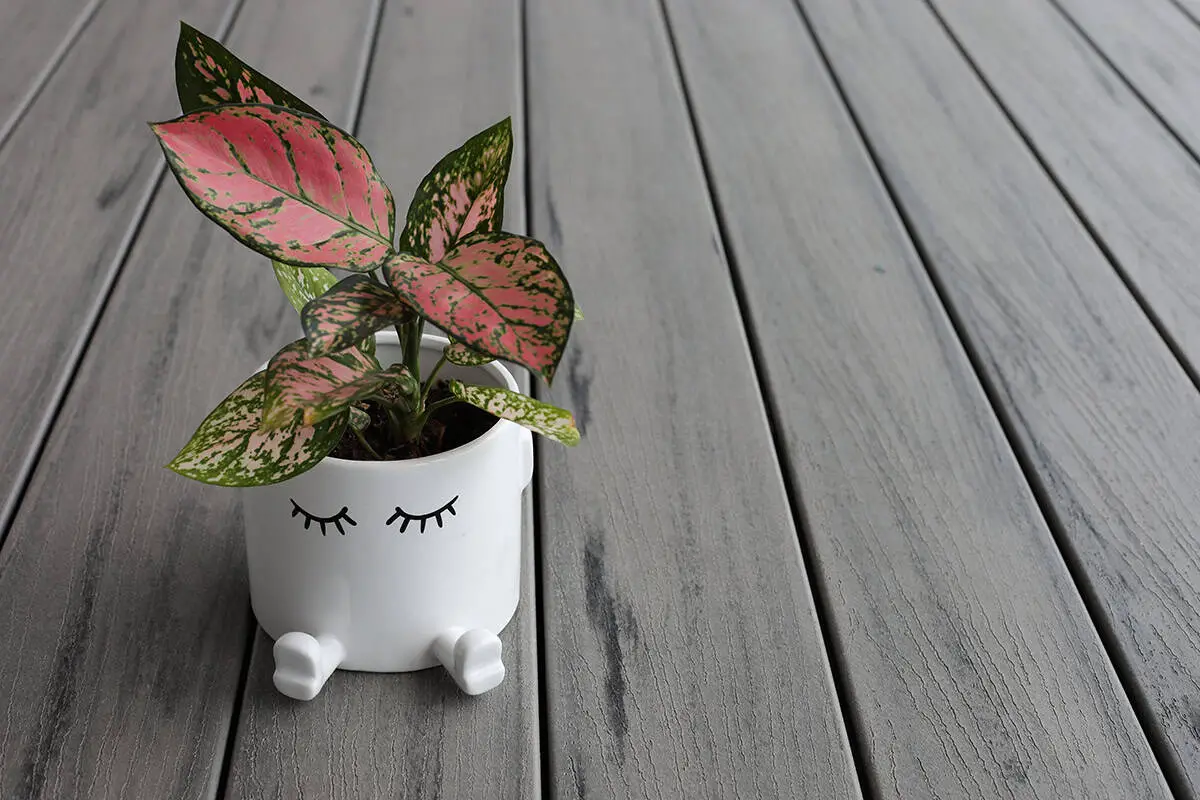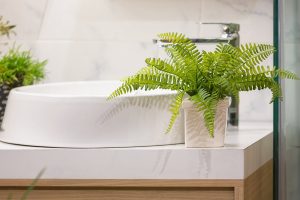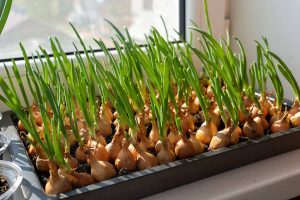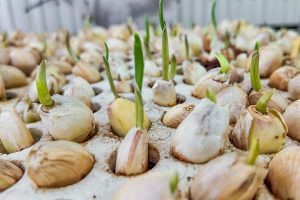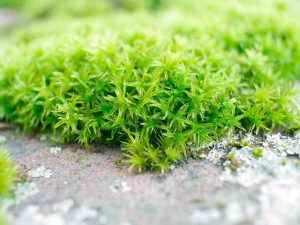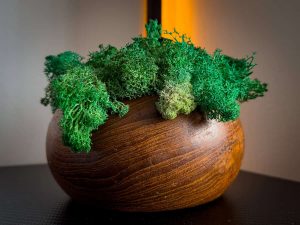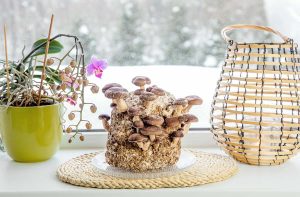You recently brought home a Chinese Evergreen, attracted by its striking, patterned leaves and reputation for being low-maintenance. However, you’re unsure how to keep it looking its best.
This guide will provide you with the knowledge to ensure your plant maintains a vibrant, healthy plant that adds beauty and freshness to your living space.
| Common Name | Chinese Evergreen |
| Botanical Name | Aglaonema spp. |
| Family | Araceae |
| History & Origin | Native to tropical and subtropical Asia |
| Plant Type | Evergreen perennial |
| Mature Size | 1-3 feet tall, 1-2 feet wide |
| Sun Exposure | Low to bright, indirect light |
| Soil Type | Well-draining, peat-based mix |
| Soil pH | 5.6-6.5 |
| Temperature | 60-75°F |
| Watering | Water when top 1-2 inches are dry |
| Fertilizing | Monthly during growing season |
| Bloom Time | Summer |
| Flower Color | Greenish-white |
| Hardiness Zone | 10-12 USDA |
| Toxicity | Toxic to pets if ingested |
| Common Problems | Overwatering, root rot, pests like spider mites |
Table of Contents
Light
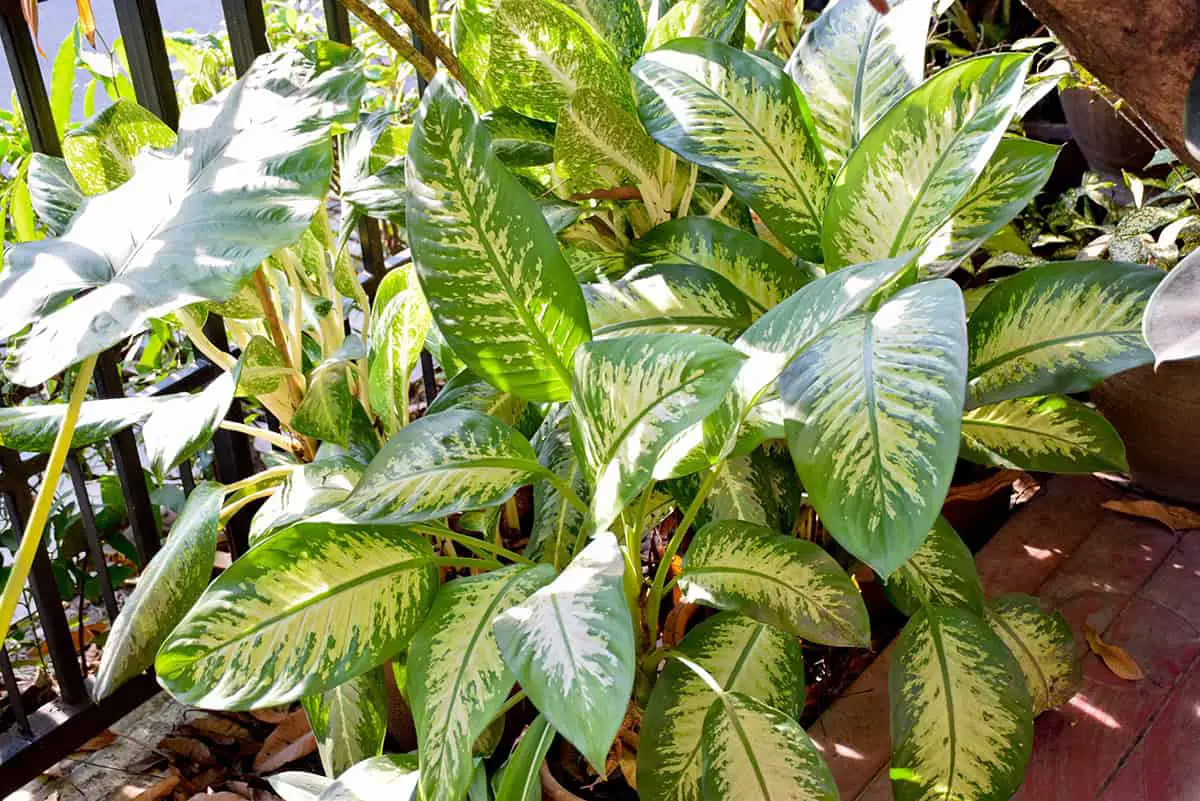
Chinese evergreen plants grow best in low to moderate light settings. You should avoid direct sunlight as it can damage the leaves.
Green Cultivars: These can tolerate lower light better than variegated types.
Variegated Types: They need a bit more light but not direct sunlight. Bright, indirect light works well.
Place your plant near a window with filtered light. North-facing windows or rooms with indirect sun provide the best conditions. If the leaves begin to yellow, they might need more light.
Too much direct sunlight can scorch the leaves. Be cautious about their placement. You want to replicate the low-light conditions of their natural habitat, like tropical forests.
Soil
Chinese evergreen thrives in well-drained, fertile soil. For the best results, use a standard potting mix that includes extra hummus. This type of soil retains moisture well without becoming waterlogged.
You should keep the soil moist, but not soggy. Check the top inch of the soil; it should feel damp to the touch. If it’s dry, it’s time to water.
A soil mixture that retains moisture yet drains well is ideal. Consider adding perlite or sand to the mix to enhance drainage. This helps prevent root rot.
Regularly check the soil’s condition. When repotting, choose a pot with drainage holes. This ensures excess water escapes, preventing waterlogged roots.
You can propagate Chinese evergreen using stem cuttings. Make sure the soil remains moist during this process to encourage root development.
Watering
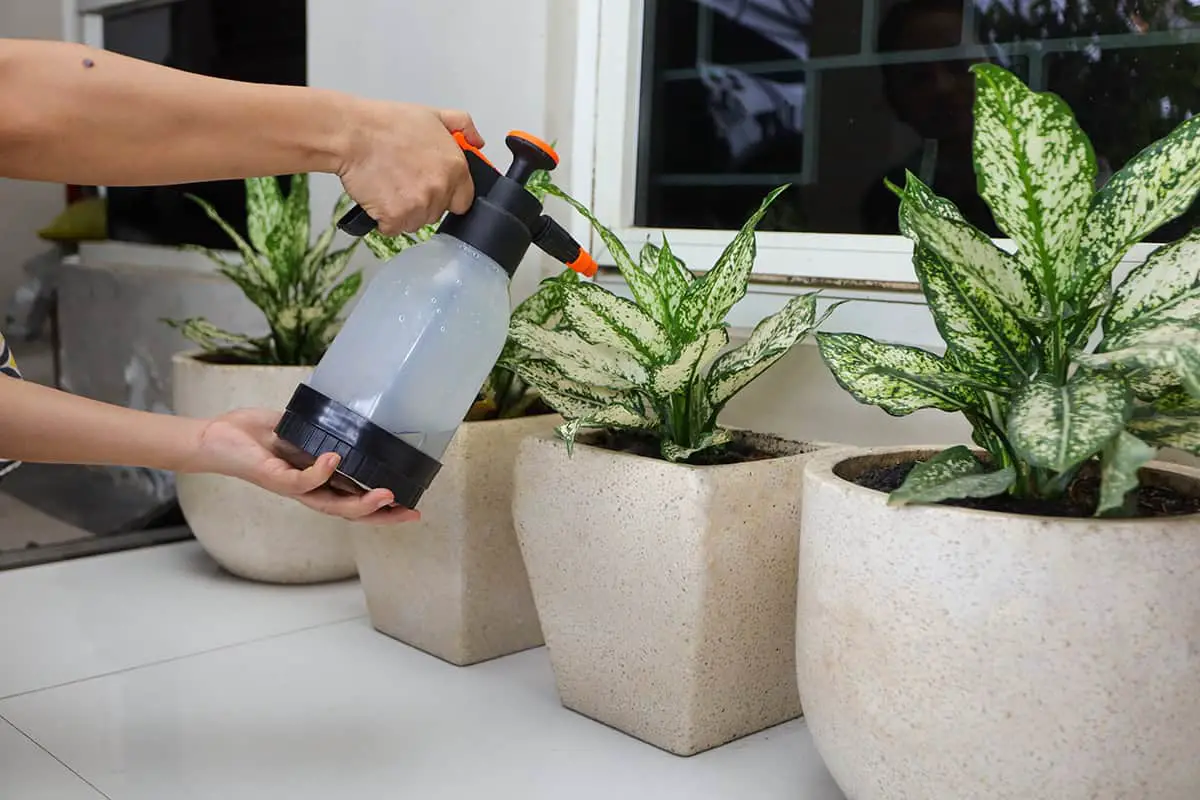
Chinese Evergreen plants require consistent moisture. Water them thoroughly when the top inch of soil feels dry to the touch. These plants prefer soil that is evenly moist but not waterlogged.
Overwatering can cause root rot. Ensure the pot has good drainage. Empty the saucer below the pot to prevent standing water.
In winter, reduce watering. The cooler months slow the plant’s growth, and it needs less water. Always check the soil before watering.
Humidity helps your Chinese Evergreen thrive. You can mist the leaves occasionally or place the pot on a tray filled with water and pebbles. This increases humidity around the plant.
It’s best to use room-temperature water. Cold water can shock the roots. Avoid using softened water, which may contain salts that could damage the plant.
Chinese Evergreens generally tolerate low humidity, but higher humidity levels promote lush foliage. Keep an eye on the plant’s leaves. If they start to brown at the tips, it might be a sign of low humidity or overwatering.
Temperature and Humidity
Chinese evergreen thrives in warm temperatures. The ideal range is between 68°F and 77°F. They can tolerate temperatures as low as 55°F, but growth slows.
Keep the plant in a room that stays consistently warm. Avoid placing it near drafts or air conditioning units. Extreme temperature changes can harm the plant.
Humidity levels are also crucial. Average house humidity levels work fine. Low to moderate humidity is acceptable. Aim for a relative humidity of 40-50%. Higher humidity is better if feasible.
To increase humidity, place the plant on a tray filled with water and pebbles. Ensure the pot is above the waterline. Alternatively, regularly mist the leaves with water.
Use a hygrometer to monitor humidity levels. It helps to avoid extremes. If the air is too dry, the leaves may develop brown tips. If too humid, mildew might occur.
Adjust your care practices depending on the season. In winter, indoor air tends to be drier. Use a humidifier if necessary. During summer, pay attention to any signs of stress from dry air.
Fertilizer
Use a balanced, water-soluble fertilizer with equal parts nitrogen, phosphorus, and potassium, such as a 10-10-10 or 20-20-20 formula.
Apply fertilizer every four to six weeks during the growing season. Dilute it to half the recommended strength to avoid over-fertilizing.
You can perform a soil test to understand the nutrient needs of your plant. This can help determine if additional nutrients are required.
Be careful not to fertilize in winter. The plant’s growth slows down, making it more susceptible to fertilizer burn.
A slow-release fertilizer can also be used. This can provide a steady supply of nutrients over several months. Follow the instructions on the label for the appropriate application rate.
Avoid using fertilizers high in heavy salts. These can damage the roots and impair the plant’s ability to absorb water and nutrients.
If the leaves turn yellow and new growth is slow, it may indicate a nutrient deficiency. Adjust your fertilizing regimen accordingly.
Keep in mind that quality potting soil is also important. Good soil can supply some nutrients that supplement your fertilizing efforts.
Make sure to water the soil after applying fertilizer. This helps distribute the nutrients evenly and prevents root burn.
Propagation
Propagating Chinese evergreen can be done using stem cuttings or division. Stem cuttings involve taking sections of the plant’s stem, preferably 2 to 3 inches long. Each section should have at least one node. This node is where the roots will develop.
To propagate using stem cuttings, you can lay the cutting horizontally on a growing medium. You can also insert it vertically into the soil. Keep the soil consistently moist to encourage root growth.
The division is another method. During repotting, you can separate the plant into smaller sections. Each section should have its roots. This is an effective way to propagate and manage the size of your Chinese evergreen.
For both methods, ensure the temperature is between 68 to 77°F. Chinese evergreens do well in low to moderate humidity. Keeping the environment stable will help new plants thrive. If the temperature drops below 55°F, it may hinder growth.
Use a well-draining soil mix with extra humus for best results. This ensures that the roots get enough air. Consistently moist soil is crucial for the health of new plants.
Pruning
Pruning your Chinese evergreen is simple and helps maintain its shape. Unlike many plants, Chinese evergreen plants do not need extensive pruning. A light trim occasionally will ensure healthy growth.
Remove yellow or brown leaves. This keeps the plant looking fresh. Cut the leaves at the base with clean, sharp scissors. This prevents any potential disease spread.
Focus on removing any dead or damaged stems. This encourages the plant to direct its energy to healthier parts.
Best times to prune:
- Prune during the growing season.
- Avoid pruning during dormancy as this can stress the plant.
Pruning can also help control the size of the plant. If your Chinese evergreen grows too large, trim back the longest stems. This will keep the plant manageable.
Remember to always use clean tools. Dirty tools can introduce bacteria or fungi, potentially harming your plant.
Potting and Repotting
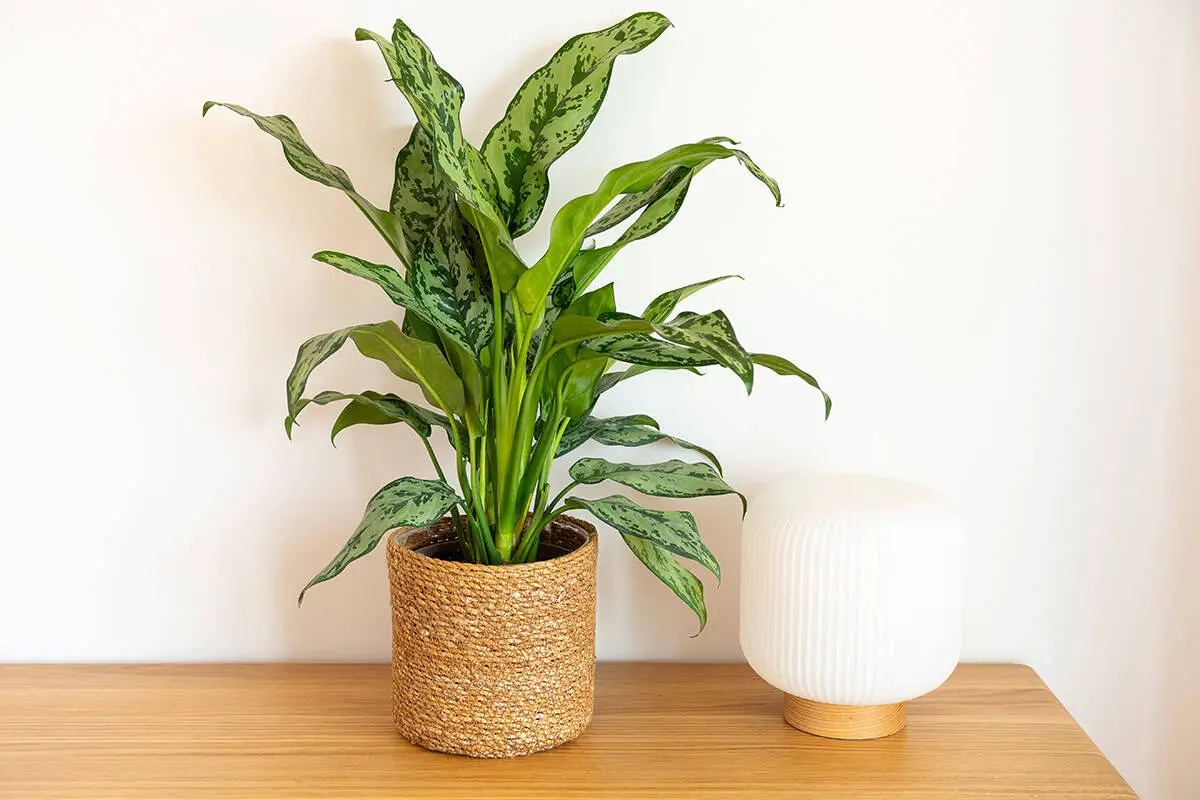
Chinese evergreens thrive in well-draining soil. Use a humus-rich potting mix. Choose a pot with drainage holes to prevent waterlogging.
Begin potting by filling the container with soil up to a third. Place the plant, then add more soil around the roots. Press gently to remove air pockets.
Repotting might be needed every few years. Signs include the plant becoming top-heavy or roots growing out of drainage holes. When repotting, select a container just one inch larger than the current pot.
When handling the plant, be gentle to avoid damaging the roots. Water the plant lightly after repotting to help it settle in its new home.
Avoid over-watering, which can lead to root rot. Check the soil moisture before watering. If the top inch of soil is dry, it’s time to water.
Common Problems & Troubleshooting
Chinese evergreens can encounter pest issues. Common pests include thrips and slugs. To control these pests, use insecticidal soap. Regularly check the leaves for infestations and remove affected leaves promptly.
Diseases are another concern. Leaf spots and rhizome rot can damage your plant. Avoid overwatering and ensure the soil has good drainage to prevent these issues.
If your Chinese evergreen displays necrotic leaf spots, it could be due to the necrotic spot virus. Unfortunately, plants infected with this virus need to be discarded to prevent spreading the infection.
When bottom leaves are shed, the plant may become bare. You can cut off the top and root it. This rejuvenates the plant and promotes new growth.
Chinese evergreens need constant moisture. Dry soil can cause leaves to turn yellow and drop.
If you notice leaf gall, this could be an indication of stress or pest infestation. Inspect the plant and address any visible problems to help it recover.
Low light conditions can also result in leggy growth. Ensure your plant receives suitable light to keep it compact and bushy.
Common Problems and Solutions:
| Problem | Solution |
|---|---|
| Pest infestations | Use insecticidal soap; remove affected leaves |
| Leaf spots, rhizome rot | Avoid overwatering; ensure good soil drainage |
| Necrotic leaf spots | Discard infected plants |
| Shedding bottom leaves | Cut and root the top of the plant |
| Dry soil | Maintain even moisture level |
| Leaf gall | Check for stress or pests; address visible issues |
| Low light | Provide adequate lighting |
Common Chinese Evergreen Varieties
Chinese evergreen, or Aglaonema, offers various varieties, each with unique leaf patterns and colors. Here are some popular types that you might consider for your collection.
Aglaonema ‘Silver Queen’
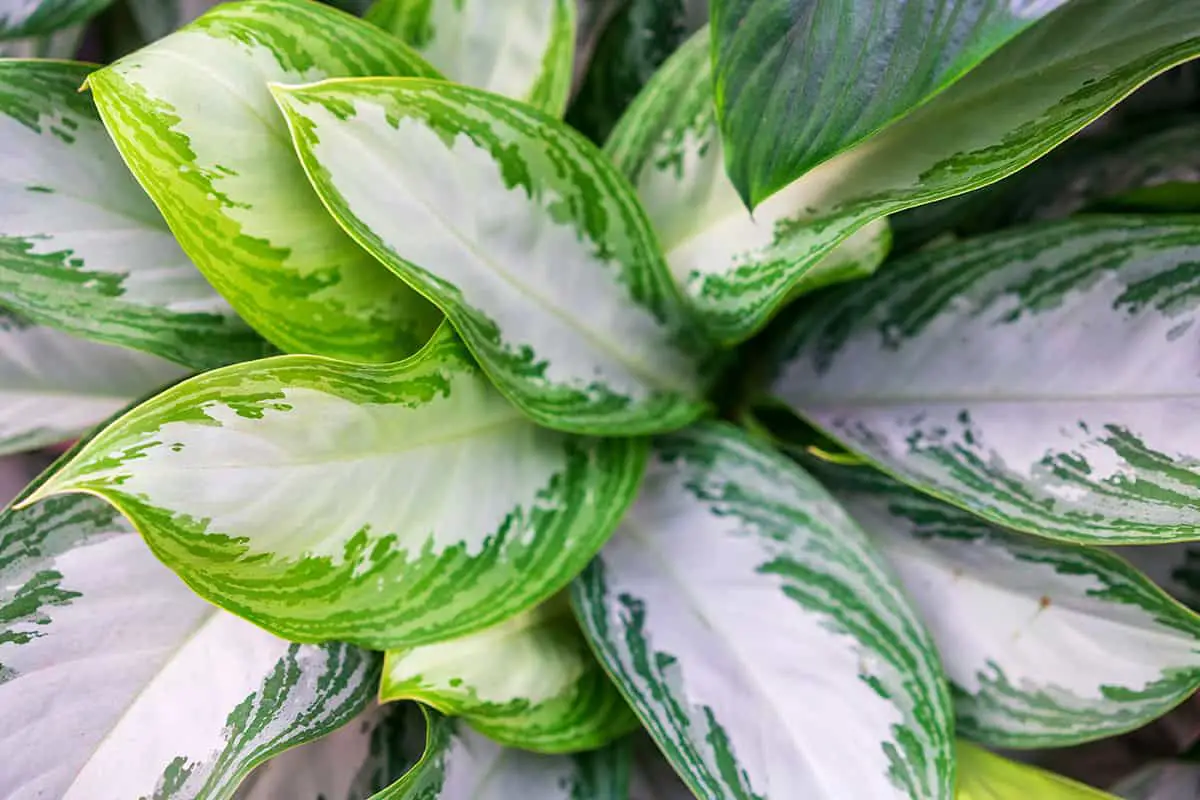
Aglaonema ‘Silver Queen’ is a classic favorite. It features silver-gray leaves with green edges and veins. This variety can brighten any indoor space. ‘Silver Queen’ typically grows to about 3 feet in height. It thrives in low to moderate light conditions, making it perfect for office environments. Keep the soil evenly moist but not soggy for the best results.
Aglaonema ‘Cutlass’
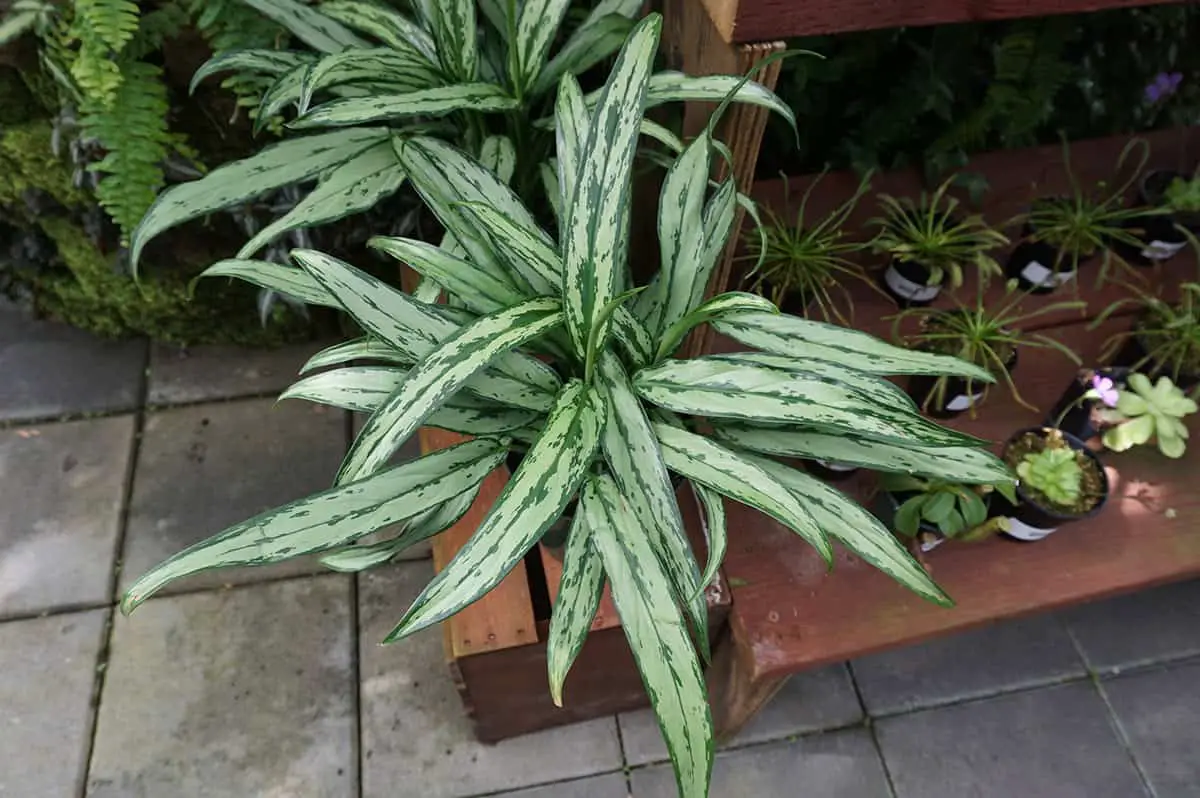
Aglaonema ‘Cutlass’ stands out with its narrow, lance-shaped leaves. The foliage is light green with darker green stripes. This variety prefers indirect light. It can tolerate lower light but may grow slower. ‘Cutlass’ needs well-drained soil and occasional watering. Ensure the soil dries out slightly between waterings to prevent root rot.
Aglaonema ‘Maria’
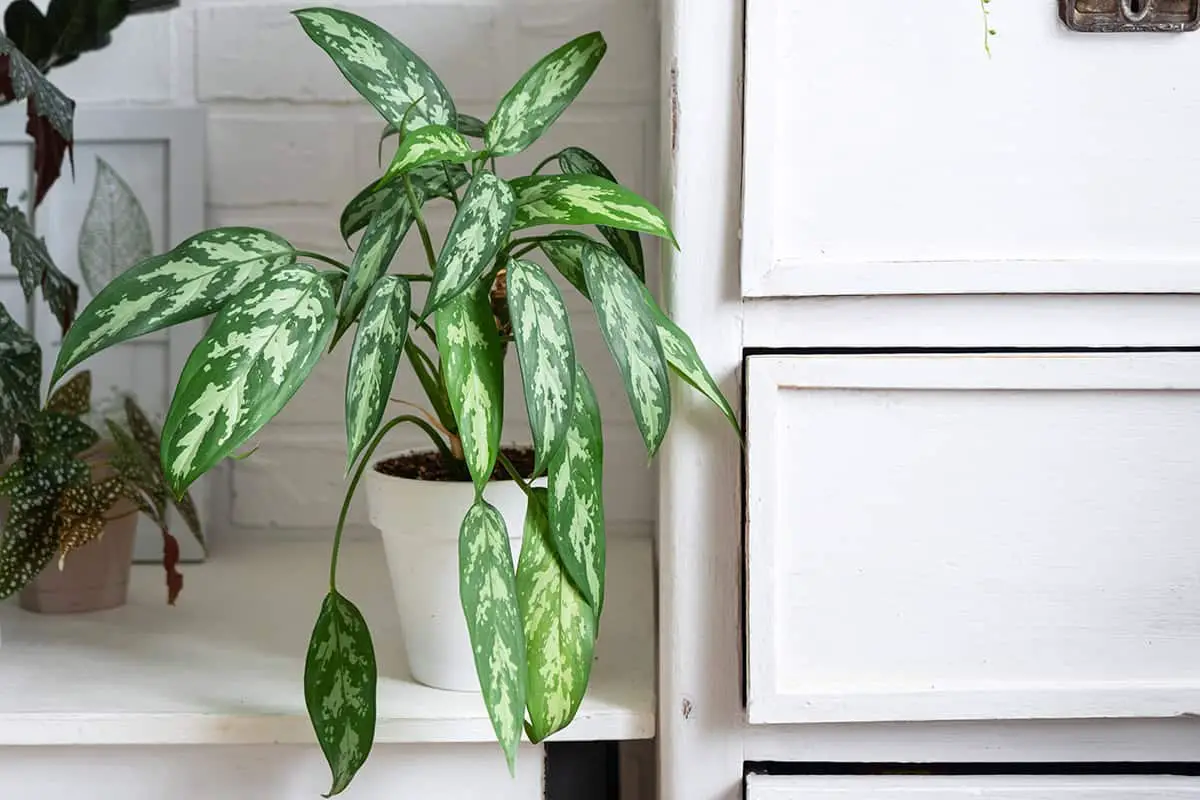
Aglaonema ‘Maria’ features dark green leaves with silver-green markings. It is known for its lush, bushy growth. ‘Maria’ can grow up to 2 feet tall and is suitable for dimly lit areas. Water the plant when the top inch of soil feels dry. This variety is easy to care for and is a good choice for beginners.
Aglaonema ‘Siam Aurora’
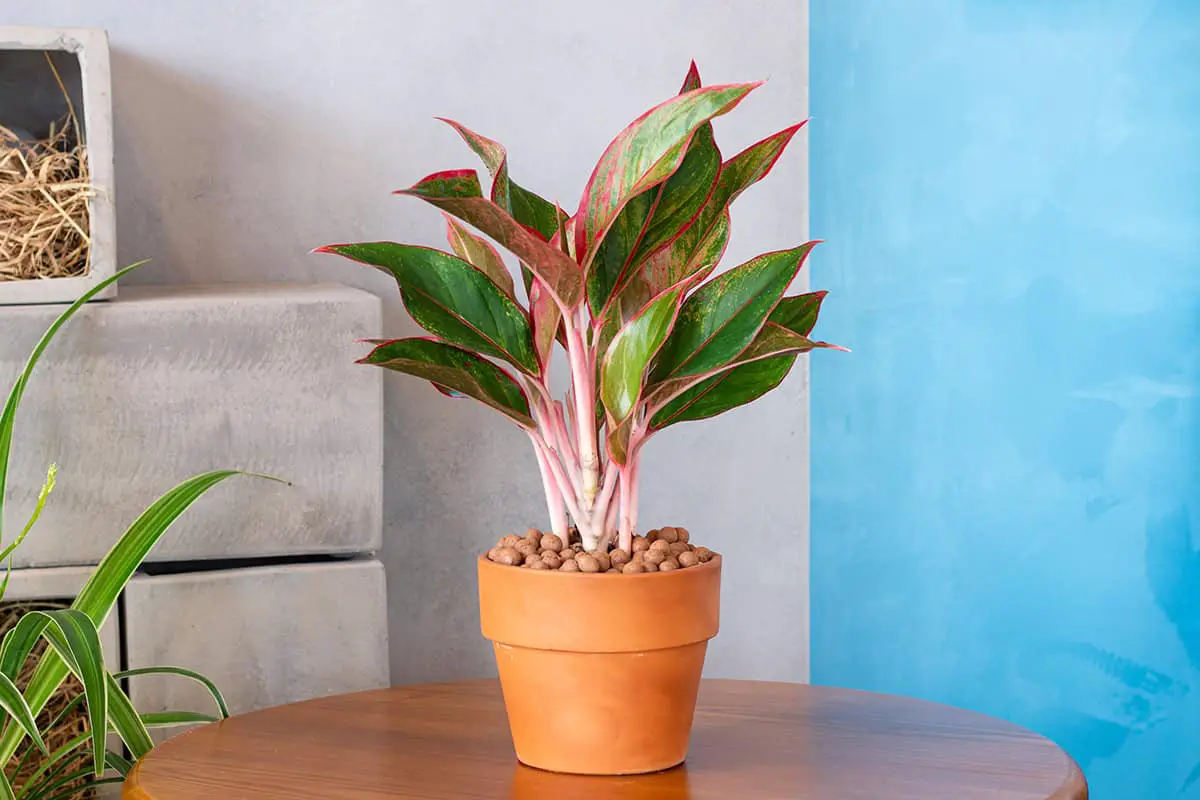
Aglaonema ‘Siam Aurora’ is notable for its vibrant colors. The leaves are a mix of green, pink, and red. ‘Siam Aurora’ prefers bright, indirect light to maintain its colorful foliage. It can handle lower light but may lose some vibrancy. Water regularly but ensure proper drainage to avoid waterlogging.
Aglaonema ‘Red Anjamani’
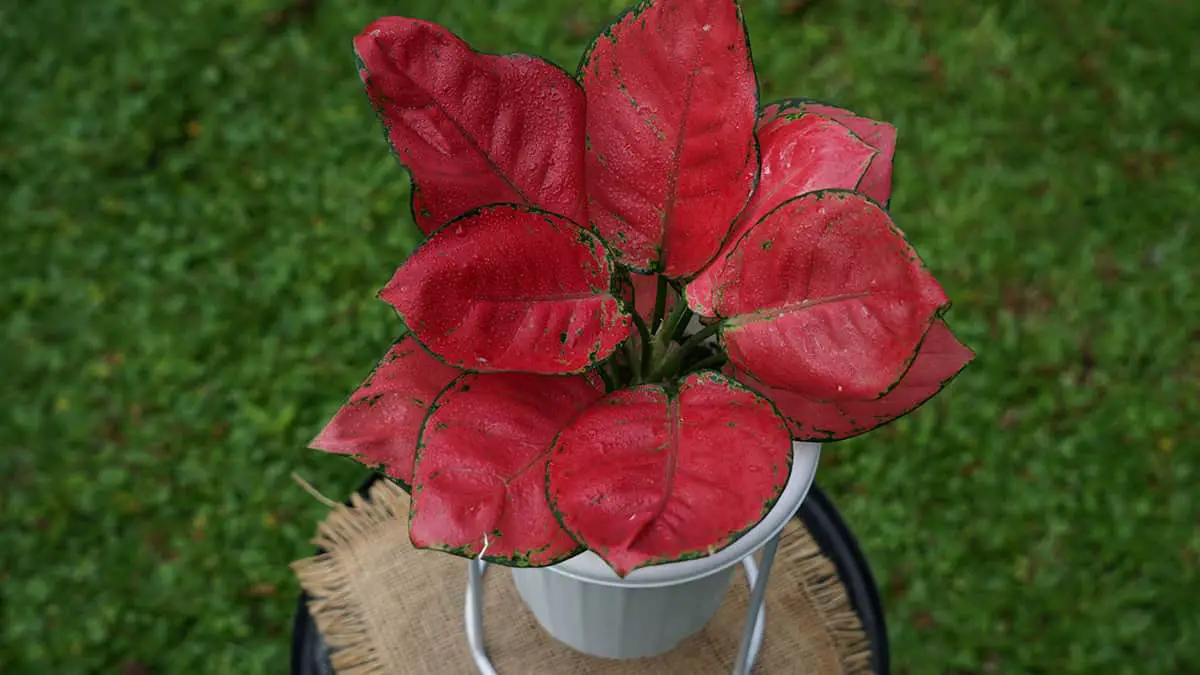
Aglaonema ‘Red Anjamani’ impresses with its deep red and green leaves. This variety is compact and does well in various indoor settings. ‘Red Anjamani’ needs moderate light but can adapt to lower light areas. It requires regular watering. Allow the soil to dry slightly between waterings to maintain healthy growth.
Chinese evergreens are versatile and visually appealing. Choose the variety that best suits your space and lighting conditions for a thriving indoor plant.
